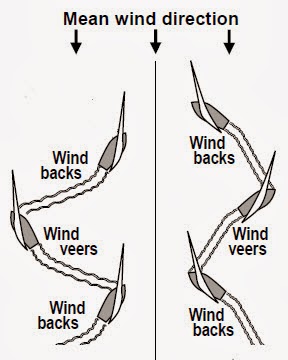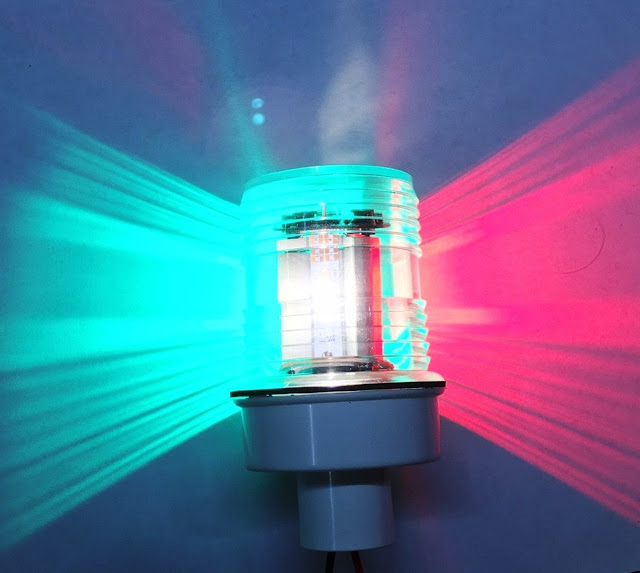Tactical Compass Compared
On BlueJ we have used several units, always mounted to mast below the boom where the whole crew can see them from anywhere on the boat. And we are always looking out for a new edge. Here is what we have learned.
NOTE: Much of the device review below is outdated. BlueJ now uses a dual Sailmon MAX mast mounted system, integrated into the boat's NEMA2k network via WiFi. Read more about that system HERE.
First up is the Velocitek ProStart.
This US$600 device has three functions:
1) GPS-based Speed over ground
2) Start timer with distance to line
3) GPS-based Course
The ProStart does lots of cool things, but is less than ideal as a pure compass. This is probably acceptable because the company does not actually market the device as a compass, but as the world's best distance-to-line tool. And this it might me. But back to the compass, because it uses GPS to calculate bearings, it does not give you your more typical heading, which magnetic compasses do, but gives you course. Course factors in slip and drift, so the numbers can sometimes seem funny. Speed is the same way, so current/tide is included in the reading. Again typical of GPS compasses, both readings can be erratic if the boat is moving very slow.
In compass mode the device shows Course and Speed in two lines of big digits. It is very easy to read from the cockpit when mast mounted, although polarized sunglasses can cause crazy patterns on the screen. You can also show peak and 10-second average top speed. It also has some sort of lift/header indicator, but that's pretty much useless.
In timer mode the two lines show count-down and distance to line. It is easy to set, start, and sync to any minute. You cannot see your compass reading when in timer mode, which is a disappointment.
This official video gives an overview:
The timer and distance-to-line functions are very nice and well thought out. If you sail in a big fleet, this can make the decision easy. It is battery powered, using 3 AA batteries for a 12-ish hour charge. The UI is VERY well designed and the device is very easy to use. It has no backlight, so it cannot be seen at night.
The Velocitek website is HERE
Next up is the Raymarine T070 Racemaster.
This is the same product as the TackTick Racemaster, as TackTick was bought by Raymarine. It runs about US$700 and features:
1) Fluxgate compass giving heading
2) Lift/Knock indicator
3) Start Timer
This device is a true compass; using an electronic fluxgate compass to give the boat's heading. The device's claim to fame, the Lift/Knock indicator, is a great feature but is a bit fiddly to set up. It requires you to beat upwind on both tacks, and let the device settle on mean wind. Its actually not clear how much of this YOU are supposed to do, and how much the device does. No one at Raymarine seems to know. But when it is set, the function is very nice, showing how many degrees you are above or below mean wind. A great feature.
If you use TackTick micronet boat instruments, or are willing to spend around $500 to interface other brands, you can set up the RaceMaster to wireless receive wind and boatspeed information from the boat's instrumentation. This is a GREAT capability, as it sets up the mean wind direction automatically from an average of true wind over time. To add this capability to non-TackTick installs, you need to add a TackTick T122 interface box to your boat.
The timer is nice as well, if not as nicely implemented as the ProStart. Because there is no GPS, you lose the distance-to-line. But you do get your compass at all times, which is a decent trade-off for most.
The spit/angled display is a mixed bag on a boat this size. I can see the advantage in a dinghy, but on a 260 the crew is far enough aft to make the angled display unnecessary, and the resulting smaller digits are harder to read. I wish this device was available in the form factor of the TackTick mast display units.
A video from TackTick explains the operation. The buttons are hard to sort out, and take some memorization to use effectively while in high-stress situations.
Overall we like the RaceMaster, and because both boats have a speed instrument it gets more use on both boats. It is also solar powered, and the display is back-lit for night racing. Find more HERE.
But... we are not done. Introducing the Velocitek Shift.
One new player is also from Velocitek, the new Shift. In many ways, the Shift is Velocitek's take on the RaceMaster, and is very interesting. One big point of interest is the use of solid state compasses and accelerometers to calculate heading. Unlike a electro-mechanical fluxgate compass that can take time to settle, reports from users are the the Shift is very smooth and quick to settle on a bearing, no matter how bumpy the ride. I also like the large display, and the rechargeable batteries and back-lighting. It features a start timer, and Velocitek's wonderful take on User Interface. I'm looking to pick one up for a test... Stay tuned!
Mounting - we currently use an old KVH Sailcomp mast bracket to hold the devices to the mast. The bracket is JUST big enough to allow the outhaul, reef, and cunningham lines through the back and not bind when the boom is out. Kestrel (our First 36.7) uses the Raymarine bracket shown below and it is much bigger and nicer. No matter what compass we end up with, we will probably switch the 260 bracket to this as well.
One other thing. The bracket that is available for the ProStart from Velocitek is for dinghies ONLY and is way too small to be used on keel boats. It looks bigger in pictures than in real life. It is only about 3 inches across at its widest point; way too small for lines to run inside. Skip that one for bigger boats.
So final thoughts:
If speed reading or distance-to-line is important, then get the Prostart. If you have other TackTick wireless instrument get a RaceMaster as they can share data. For everyone else, I would look hard at the Shift, or if you like the dual display go with the RaceMaster.









Comments
Post a Comment